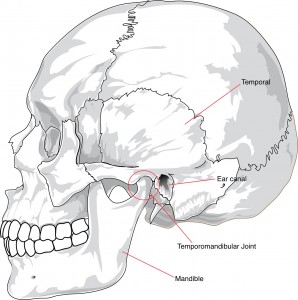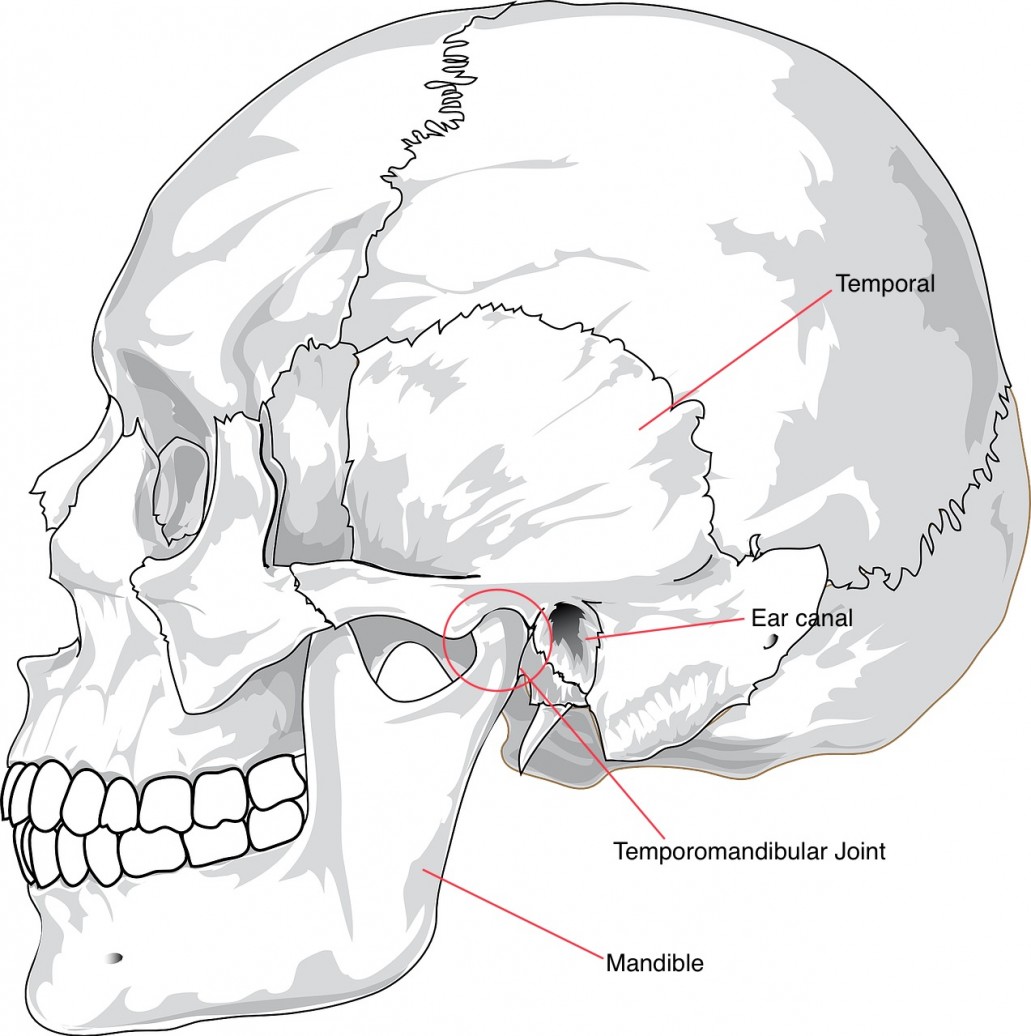 The Temporomandibular joint (TMJ) is where the mandible (lower jaw), meets the temporal parts of the skull. The TMJ has an articular disc between the two joint surfaces and behind that is the retrodiscal tissue, which is covered in nerves and blood vessels. The TMJ also has many small muscles to allow for its complicated movements of chewing (mastication), speech, yawning and swallowing.
The Temporomandibular joint (TMJ) is where the mandible (lower jaw), meets the temporal parts of the skull. The TMJ has an articular disc between the two joint surfaces and behind that is the retrodiscal tissue, which is covered in nerves and blood vessels. The TMJ also has many small muscles to allow for its complicated movements of chewing (mastication), speech, yawning and swallowing.
One of the most common problems to occur with the TMJ is Bruxism (teeth grinding). Bruxism is thought to have several causes, the main one being stress and anxiety which accounts for almost 70% of all Bruxism! It has been found that particularly work stress can play a big factor in causing Bruxism, possibly due to different coping strategies with stress. Other causes of Bruxism are sleep disorders such as: sleep apnoea; snoring and sleep walking/taking, and lifestyle factors, such as: smoking; caffeine intake and high alcohol consumption. Bruxism doesn’t just occur when you’re asleep, it can also occur when you’re awake and other habits such as nail biting, pen chewing and jaw clenching are also considered as forms of Bruxism.
Disc displacement is also another common problem to occur with the TMJ and is when the articular disc gets stuck outside of the socket when we open our mouths wide. As the disc is stuck outside of the socket and we open and close our mouths, it can produce a clicking sound as the mandible slides over the disc. The retrodiscal tissue can also get stuck in the socket and due to its neurovascular innervation, is the source of the pain experienced with clicking. Without treatment, this can then go on to disc displacement without reduction or ‘locking’. This is when the mandible stops sliding over the disc and reduces the range of movement of the TMJ and causes pain.
Both Bruxism and disc displacement can lead to headaches if left untreated. A TMJ headache is commonly misdiagnosed as a tension headache, however there are a few signs and symptoms to look out for that can differentiate the two, such as: cracking/grinding in the jaw; earache and facial tenderness and swelling. Due to the muscular attachments of the jaw in respect to the neck, prolonged protrusion of the head can also cause problems in the jaw by putting pressure on the retrodiscal tissue which can cause pain.
The good news is that TMJ problems are treatable, not only at the dentist with braces and mouth guards, but also with an Osteopath! Osteopaths are able to treat tensions and dysfunctions in the jaw with gentle soft tissue release techniques and mobilisation techniques to help rebalance the TMJ. There has been significant evidence to support manual therapy in the treatment of TMJ disorders. The osteopath will also give postural and lifestyle advice as well as rehabilitation exercises to maintain the results of treatment and to help prevent the same problem from happening again.
If you have or think you may have a TMJ problem and would like an appointment, please call 02082999798 to speak to our reception team or use our online booking system.
Written by Helen Reeves, Osteopath at the Vale Practice

